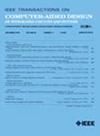ARTEMIS:用于变压器神经网络的模拟-随机 In-DRAM 混合加速器
IF 2.7
3区 计算机科学
Q2 COMPUTER SCIENCE, HARDWARE & ARCHITECTURE
IEEE Transactions on Computer-Aided Design of Integrated Circuits and Systems
Pub Date : 2024-11-06
DOI:10.1109/TCAD.2024.3446719
引用次数: 0
摘要
变形器已成为自然语言处理(NLP)和计算机视觉的强大工具。通过注意力机制,与循环神经网络(RNN)和卷积神经网络(CNN)等传统方法相比,这些模型表现出了显著的性能提升。然而,变换器通常需要大量的执行时间,因为它们需要进行大量的计算并占用大量内存。内存处理(PIM)和近内存计算(NMC)提供了高计算并行性和内存带宽,是加速变换器的理想解决方案。然而,设计 PIM/NMC 架构以支持变压器神经网络中需要在层间移动的复杂操作和海量数据仍是一项挑战。我们提出了 ARTEMIS,这是一种用于变压器模型的模拟-随机 RAM 内混合加速器。ARTEMIS 对传统 DRAM 阵列的改动极小,通过使用新型内置 DRAM 金属对金属电容器支持乘法随机计算和时序模拟累加,有效地降低了变压器模型执行的相关成本。我们的分析表明,与 GPU、TPU、CPU 和最先进的 PIM 变压器硬件加速器相比,ARTEMIS 的速度至少提高了 3.0 倍,能耗降低了 1.8 倍。本文章由计算机程序翻译,如有差异,请以英文原文为准。
ARTEMIS: A Mixed Analog-Stochastic In-DRAM Accelerator for Transformer Neural Networks
Transformers have emerged as a powerful tool for natural language processing (NLP) and computer vision. Through the attention mechanism, these models have exhibited remarkable performance gains when compared to conventional approaches like recurrent neural networks (RNNs) and convolutional neural networks (CNNs). Nevertheless, transformers typically demand substantial execution time due to their extensive computations and large memory footprint. Processing in-memory (PIM) and near-memory computing (NMC) are promising solutions to accelerating transformers as they offer high-compute parallelism and memory bandwidth. However, designing PIM/NMC architectures to support the complex operations and massive amounts of data that need to be moved between layers in transformer neural networks remains a challenge. We propose ARTEMIS, a mixed analog-stochastic in-DRAM accelerator for transformer models. Through employing minimal changes to the conventional DRAM arrays, ARTEMIS efficiently alleviates the costs associated with transformer model execution by supporting stochastic computing for multiplications and temporal analog accumulations using a novel in-DRAM metal-on-metal capacitor. Our analysis indicates that ARTEMIS exhibits at least
$3.0\times $
speedup, and
$1.8\times $
lower energy compared to GPU, TPU, CPU, and state-of-the-art PIM transformer hardware accelerators.
求助全文
通过发布文献求助,成功后即可免费获取论文全文。
去求助
来源期刊
CiteScore
5.60
自引率
13.80%
发文量
500
审稿时长
7 months
期刊介绍:
The purpose of this Transactions is to publish papers of interest to individuals in the area of computer-aided design of integrated circuits and systems composed of analog, digital, mixed-signal, optical, or microwave components. The aids include methods, models, algorithms, and man-machine interfaces for system-level, physical and logical design including: planning, synthesis, partitioning, modeling, simulation, layout, verification, testing, hardware-software co-design and documentation of integrated circuit and system designs of all complexities. Design tools and techniques for evaluating and designing integrated circuits and systems for metrics such as performance, power, reliability, testability, and security are a focus.

 求助内容:
求助内容: 应助结果提醒方式:
应助结果提醒方式:


